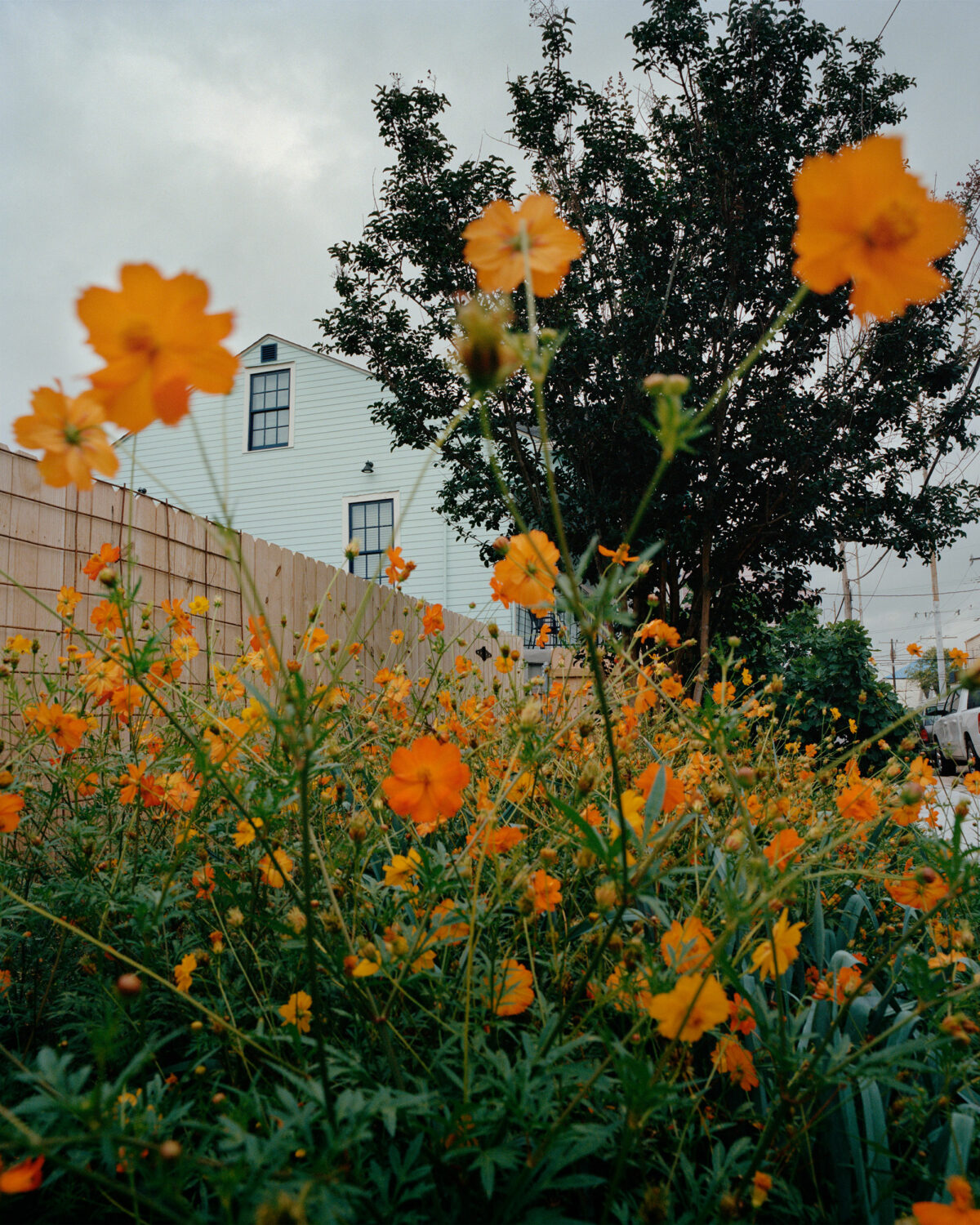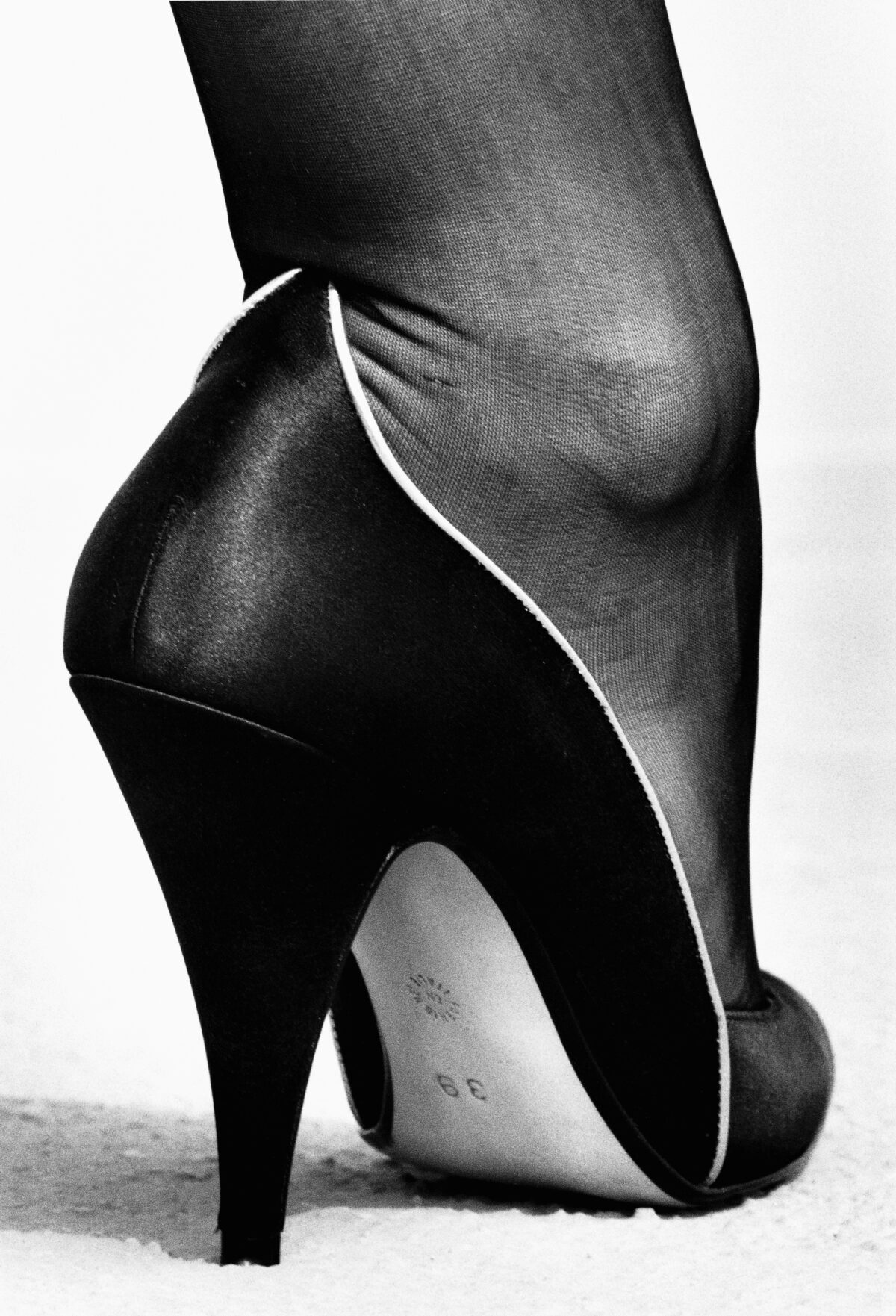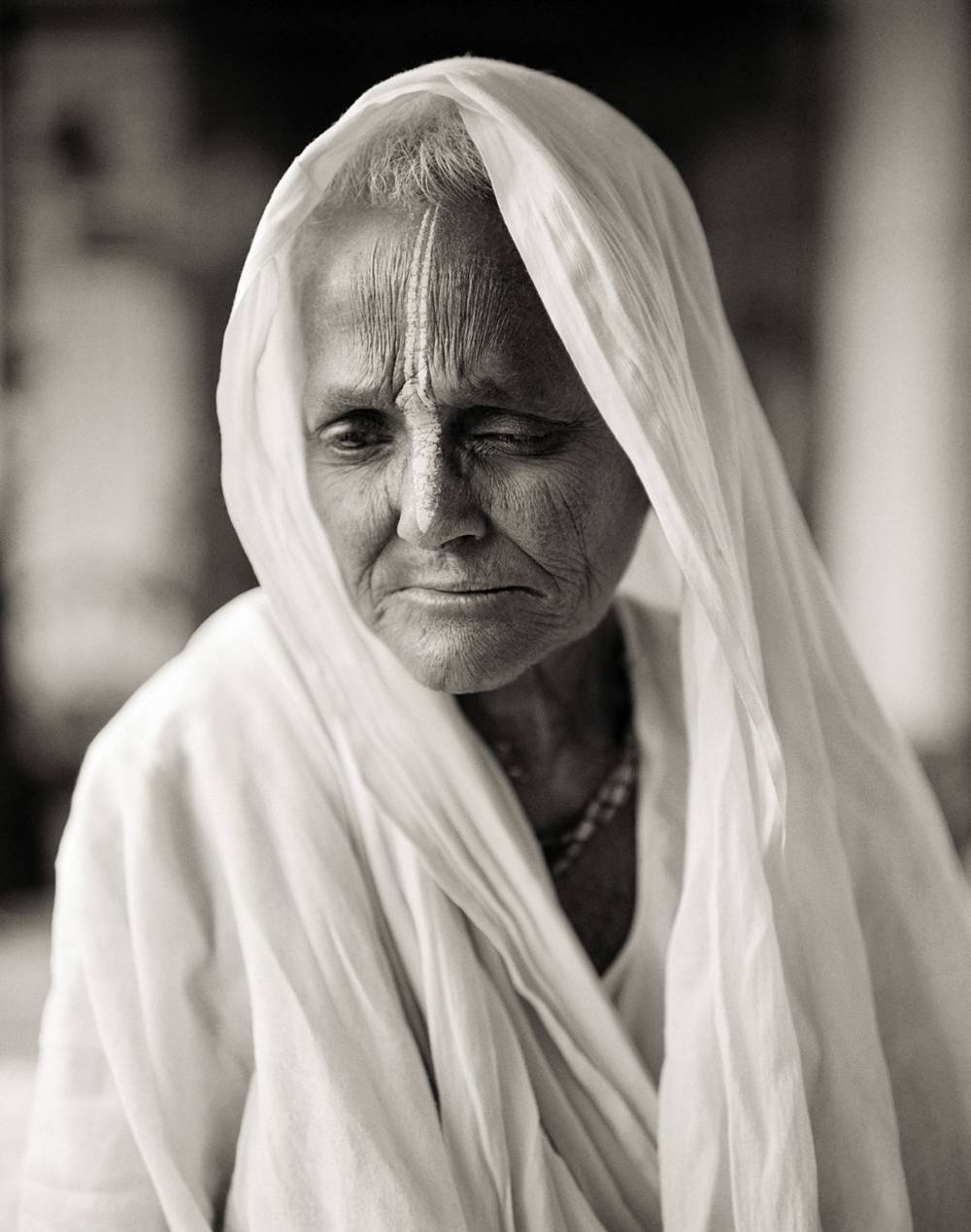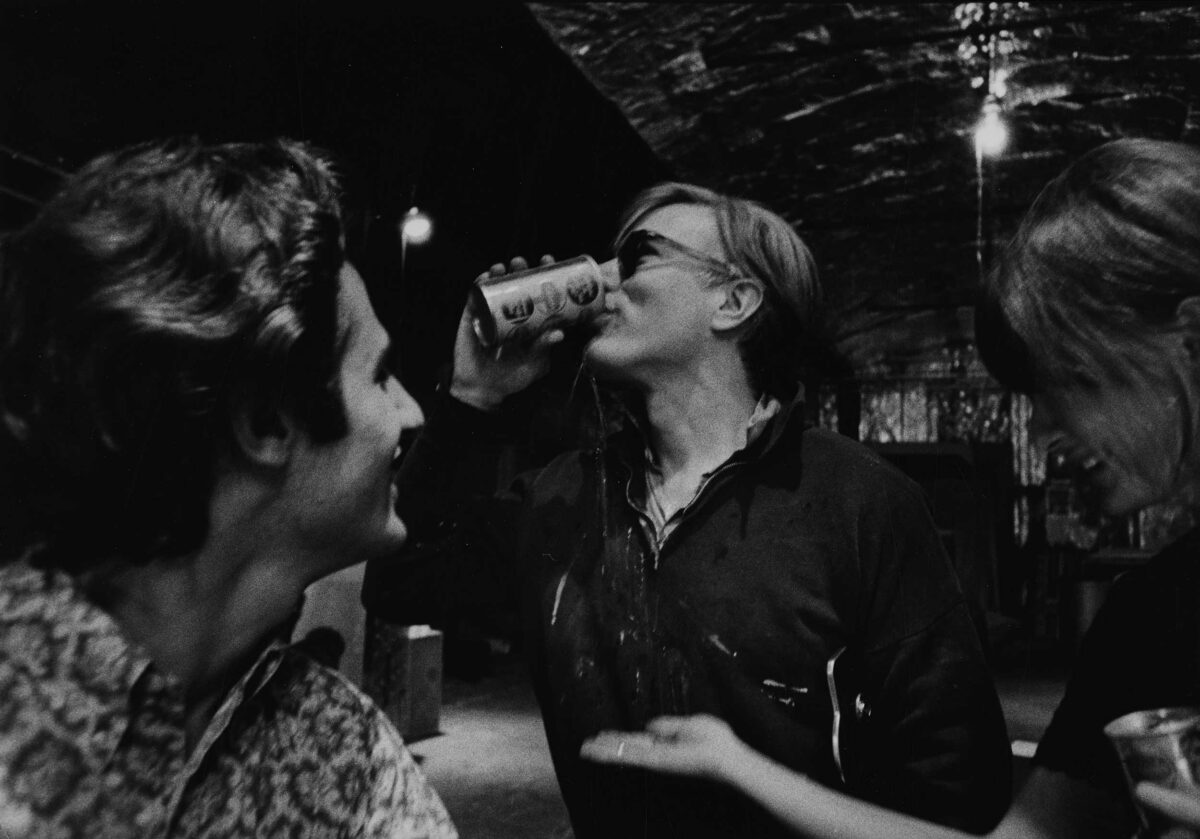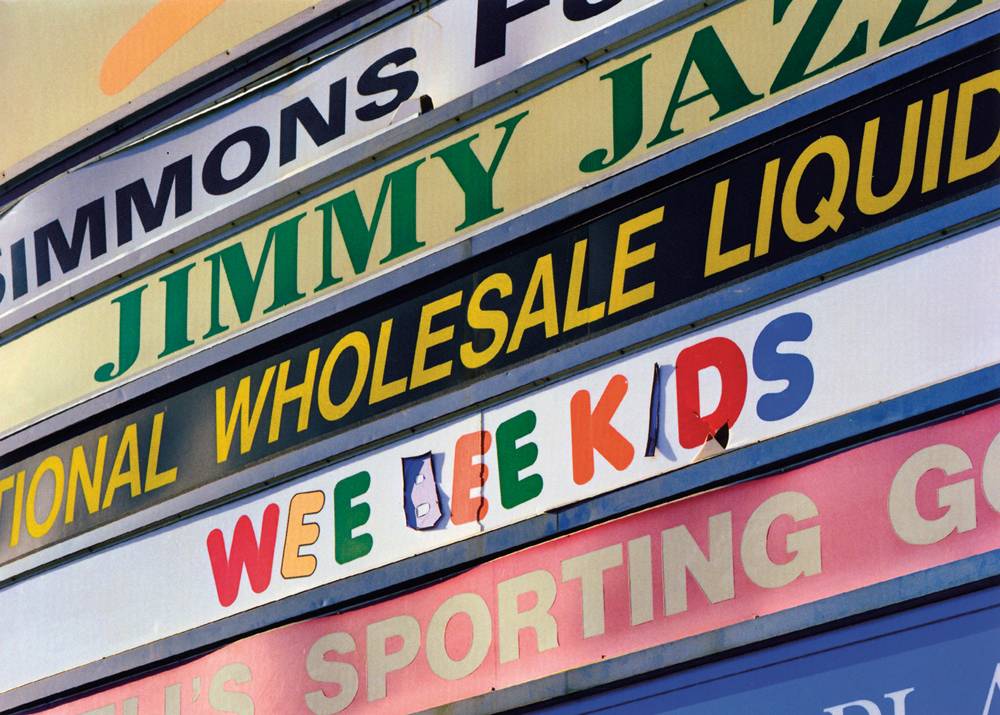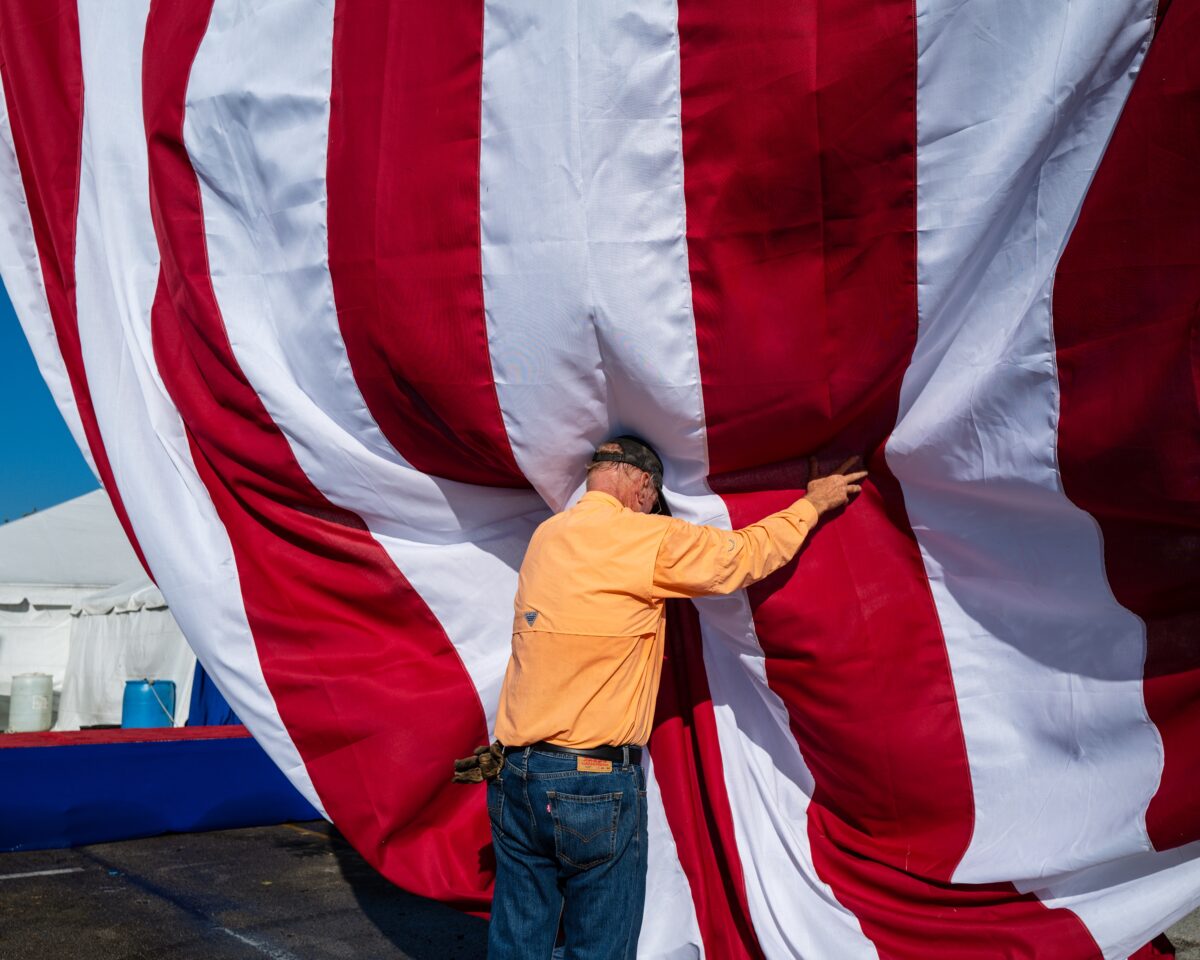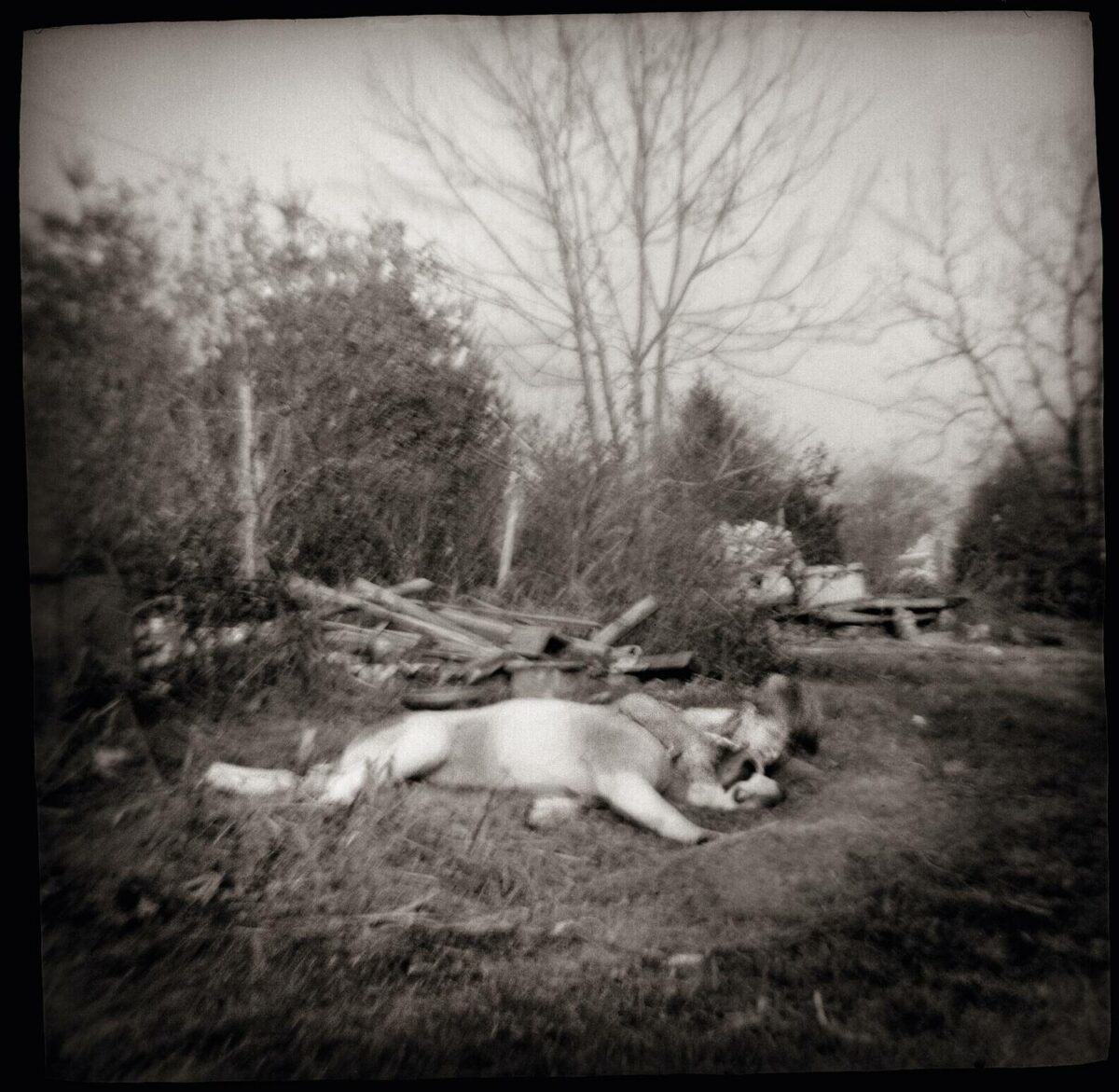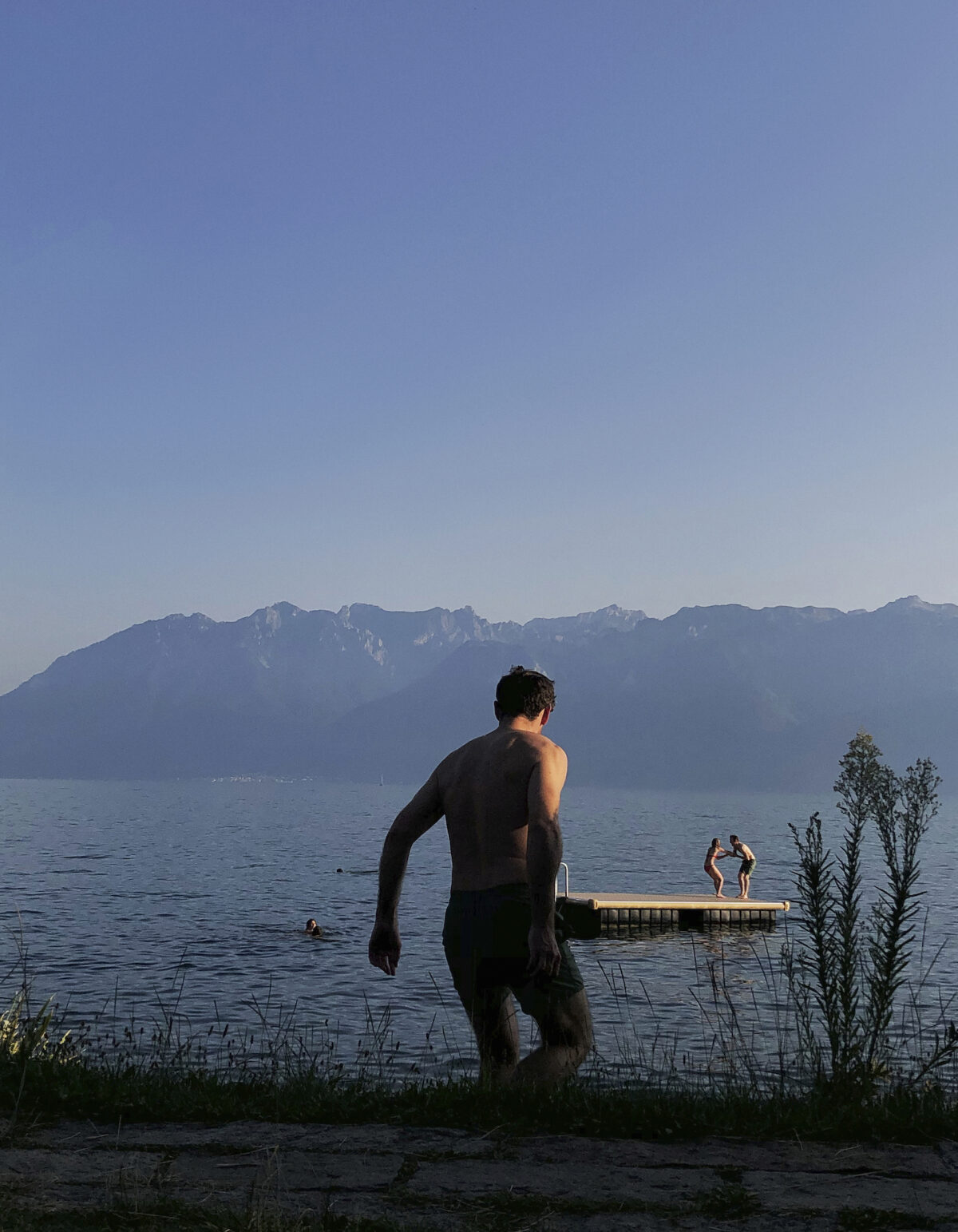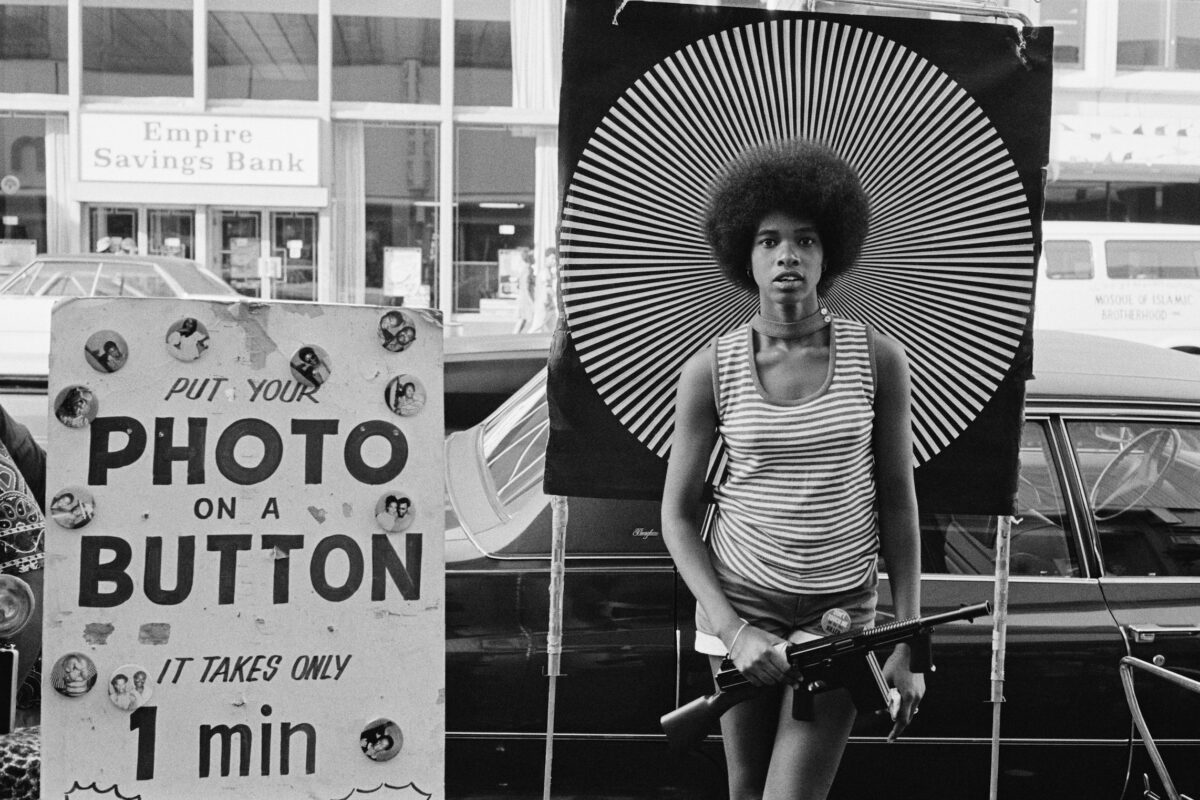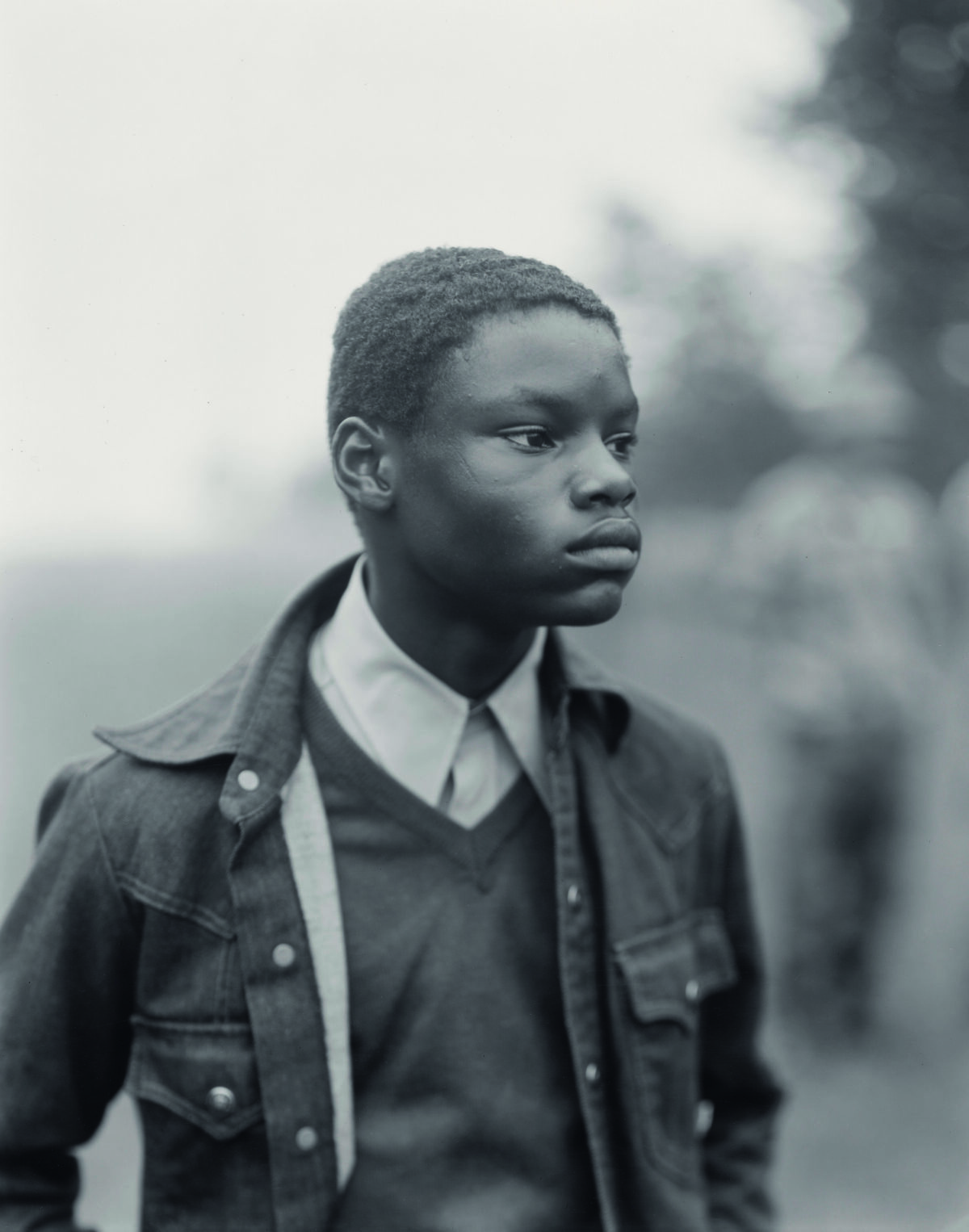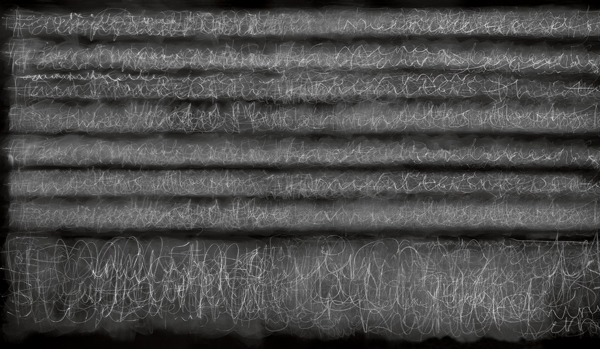

British photographer Idris Khan layers on all levels. His photographs frequently involve compounding multiple exposures informed by coolly conceptual, photographic, and most recently, painterly practices. His current work explicitly references Cy Twombly’s expressionistic squiggles, but it also exudes the calm horizontality of paintings by Agnes Martin. His show at the Fraenkel Gallery this fall included abstract black-and-white works, the largest of which are painterly in scale, depicting horizontal bands against a cloudy background. Khan painted a blackboard onto one of his studio walls and began a series of writing projects, inscribing, erasing, and re-inscribing texts and photographing each iteration in multiple exposures. Many of the images contain up to 2,000 layers. The results are dusty, velvety clouds of erasure with scratchy squiggles that hint at meaning generated from ephemeral rituals, like acts of prayer.
As with all of Khan’s projects, these works were created with a carefully articulated conceptual process. He has encapsulated the varying time frames that notable artists took to create works with repeated gestures. Previously, he photographed entire series by other artists in single images: every… Nicholas Nixon’s Brown Sisters, 2004, compiles 29 layers of Nixon’s annual photographs into one ghostly composition.
Twombly’s work, on the other hand, is very much identified with a signature gesture, his playful squiggles evocative of handwritten text. Khan channels that gesture through his own hand, and warms his cool, formal proclivities by nudging this series into the painting/drawing dialogue. One of the most effective works here, however, is an homage to an invisible work, John Cage’s Four Minutes and Thirty-Three Seconds. Khan has repeatedly chalked out the score to the iconic silent composition far longer than its proscribed time frame, and he ends up with a kind of atmospheric visual noise, redolent in literal and figurative grayness. That in-between tone is perhaps the signal of an intriguing conceptual shift in this artist’s approach.

